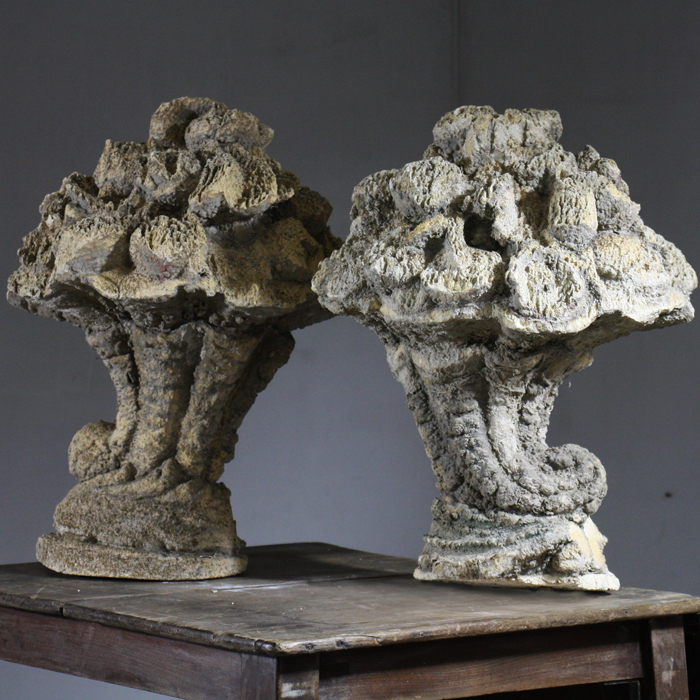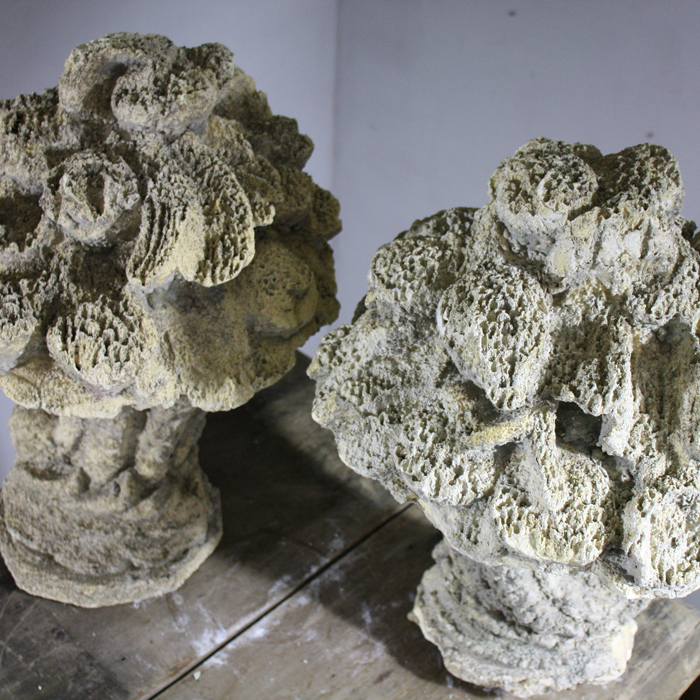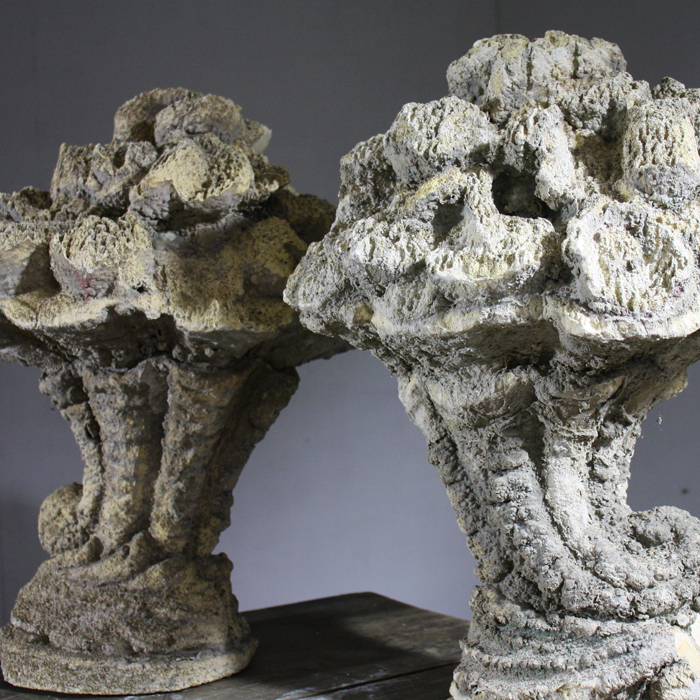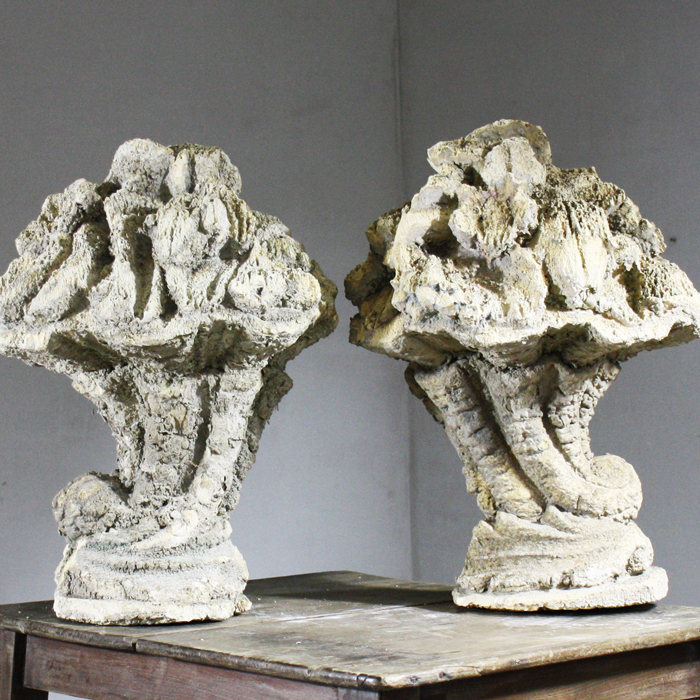A pair of Italian carved tufa stone cornucopia,
late 19th or early 20th Century,
each of the opposed pair carved as a flared wrythen fluted shell, laden with fruit,
£1,250
In stock
Tufa stone, used historically for the creation of grottos, is light and soft and weathers very easily - especially when subject to the ravages of acid rain. These horns of plenty have picked up a beautiful gnarled patina over the years but, in order to arrest this weathering, they are probably best kept indoors.




